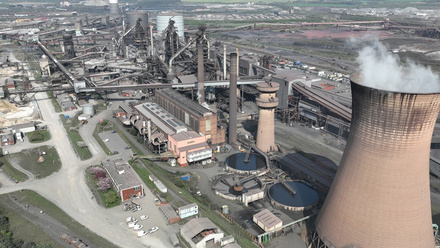Marine sponge inspires architectural design
A deep-water sponge offers a new take on lattice construction that could strengthen bridges and buildings.

More commonly known as Venus’ flower basket, the white, lattice-like silica structures of marine sponge Euplectella aspergillum are inspiring mechanical engineers with a new design for high-strength, diagonally-reinforced, square lattice structures.
In a Harvard Horizon presentation, Matheus Fernandes, a Graduate Student at the School of Engineering and Applied Sciences (SEAS) at Harvard University, USA, shares that the sponge-inspired geometrical structure has 20% higher yielding strength than conventional lattice constructs.
Speaking to Materials World, Fernandes says, ‘Through its unique incorporation of paired diagonal struts, our sponge-inspired square lattice geometry is more resistant to buckling failure modes than previous designs. In other words, while using the same amount of material, our new lattice geometry is more efficient at allocating the material to achieve a higher buckling strength.’
James Weaver, Senior Staff Scientist at the University, notes that, usually, these types of truss structures are often associated with bridges and buildings. He continues that not much has changed since architect Ithiel Town patented his invention to stabilise lattices in the 1800s for designing bridges in Connecticut. Weaver says that their invention is important as it presents a completely new idea ‘resulting in a new generation of lattice structures that are significantly more efficient from a material use perspective’.
The researchers foresee several areas of application for this
bio-inspired structure ranging from small-scale medical implants to large-scale bridges and buildings.
‘The beauty of these findings is that since their performance is based on geometry, they are largely material and scale-independent,’ Weaver states.
Testing of the structure under uniaxial compression and three-point pending, revealed ‘repeatedly that the sponge-inspired lattice designs [have] the capacity to handle a higher load before failing’, says Fernandes.
He believes that the technology is now ready for large-scale roll-out. ‘We are working with strategic partners and are accepting applications from people who are interested in utilising this technology.’
The team continues to explore additional structure-function relationships in the lattice structure.







